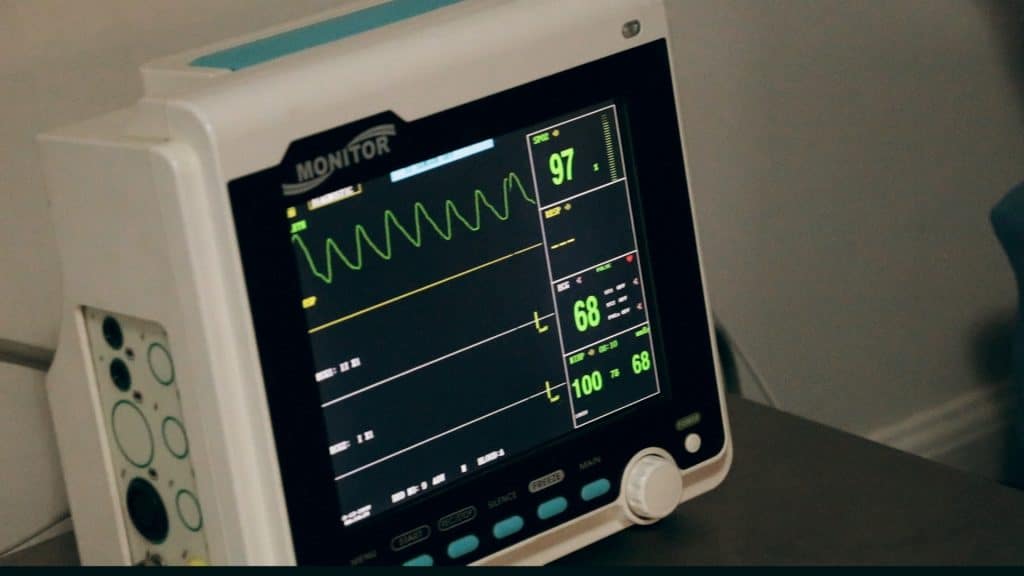
In the past couple of decades, more and more people have been claiming they’d been victims of medical malpractice.
The thing is:
Looking at the medical malpractice statistics, you’ll be surprised to learn how likely it is for physicians to be named in a claim.
Multiple ones, to be precise.
In fact, physicians themselves are quite surprised. Ultimately, these tend to be very lengthy and costly trials.
Now:
The following statistics feature the key finding and the most relevant insights from the state-of-the-art reports and surveys. At The High Court, we’ll bring you medical malpractice percentage by state, and stats on costs and lawsuits.
So, without further ado, let’s dive right in.
Shocking Medical Malpractice Statistics (Editor’s Picks)
- 41% of people claim they’ve been victims of medical malpractice.
- 48% of the malpractice cases include more than one person.
- Surgeons are the most likely medical professionals to get into a lawsuit – 85%.
- 78% of all medical malpractice claims don’t result in any payment.
- 25% of physicians have lost faith in their patients because of medical malpractice lawsuits.
- 250,000 deaths annually happen because of medical errors.
- 99% of physicians face a lawsuit by the age of 65.
General Medical Malpractice Statistics
1. There are 250,000 medical malpractice deaths each year.
(Source: Hopkins Medicine)
Malpractice in healthcare is the third leading cause of death in the US, right after cancer and heart disease. For comparison, that’s over 20 times the number of people who die in drunk-driving accidents each year.
In fact, this John Hopkins study from 2016 shows an increase of medical malpractice cases compared to a previous study in 2009, when the number of medical malpractice deaths stood at 200,000.
2. 41% of Americans believe a medical error was made in their care.
(Source: Miller and Zois)
As many as four in ten people believe they have been subject to certain medical malpractice in the past. Some of the most common medical errors are diagnostic failure, surgical error, and medication error.
What’s worse:
[bctt tweet=”Up to 73% of patients who have been subject to medical malpractice were directly injured by the error.” via=”no”]
However, even though the number of medical errors is so high, only 1% of those will end up in a lawsuit.
Medical Malpractice Costs Statistics
3. Between 2009 to 2018, the average payout for a medical malpractice claim was around $309,908.
(Source: Rosenbaum & Associates)
The lowest medical malpractice payments were reported in 2010 ($3.66 billion), and the highest payments were recorded in 2015. A total of $4.01 billion were paid out to the victims of medical malpractice.
Between 2009 and 2018, the entire sum amounted to $38.5 billion, and the average payout for a claim, according to the NPDB, was around $309,908. These mind-blowing figures are not unlike those we see in patent litigation.
4. Between 2009 and 2018, the number of annual medical malpractice cases was 12,414 on average.
(Source: Rosenbaum & Associates)
Even so, this period also witnessed a gradual decrease of 18.5% – from 14,017 in 2009 to 11,429 in 2018. This should come as a bit of a surprise, as the estimated number of medical malpractices was actually on the rise.
5. Malpractice stats reveal 99% of physicians face a lawsuit by the time they’re 65.
(Source: Rosenbaum & Associates, NEJM)
A scientific article in The New England Journal of Medicine analyzed malpractice data from 1991 to 2005. The analysis included a total of 40,916 physicians covered by a large professional liability insurer across the nation.
Here’s the deal:
Medical lawsuits statistics show that by the age of 65, fewer physicians in low-risk specialties had faced a malpractice claim (75%) than those in high-risk specialties (99%).
6. 78% of all claims didn’t result in payments.
(Source: NEJM)
During the study period, 7.4% of all physicians had a claim. However, not all claims result in payment. Specifically, 1.6% had a claim that was led to a payment.
On the other hand, 78% of all claims didn’t result in any payments.
Proportion-wise,19.1% of the physicians were specialists in neurosurgery, 15.3% in general surgery, 3.1% in pediatrics, 5.2% in family medicine, 2.6% in psychiatry, and 18.9% in thoracic–cardiovascular surgery.
7. The median payment was $111,749.
(Source: NEJM)
Now, what were the indemnity and the median payment for the claims?
Check this out:
For the cases that resulted in payment, the indemnity was $274,887, and the median was $111,749. The mean payments ranged from $117,832 for dermatology to $520,923 for pediatrics.
8. 38% of lawsuit plaintiffs have received a monetary award of $500,000 or less, medical malpractice statistics confirm.
(Source: Medscape Malpractice Report 2019)
The monetary award that the patients or the plaintiffs who have initiated the lawsuit varies. Some 30% of plaintiffs receive an award of $100,000 or less.
Additionally, 38% receive $500,000 or less, while 18% receive $1 million or less. Finally, only 3% don’t get anything.
Interestingly, only slightly less than half of physicians stated they’re satisfied with the fairness of the lawsuit.
Current State of Medical Malpractice
9. Medical malpractice claim costs in the US have increased by 50% since 2009.
(Source: AonASHMR, Beazley)
Aon annually reports on emerging trends in the hospital and physician professional liability environment. The 2020 report includes an analysis of medical professional liability insurance. One of the main findings is that the average cost of a medical malpractice claim in the United States has increased by half over the last decade.
10. Indemnity and deference cost per claim is expected to rise by 3% annually.
(Source: AonASHMR)
In recent years, medical professional liability (MPL) claims were stable, and the trend projections are that there would be a 0% increase in such claims. Indemnity and deference cost per claim, on the other hand, is expected to rise by 3% annually.
11. The largest verdict size rose to $9.4 million in 2019.
(Source: AonASHMR)
When it comes to the medical malpractice verdict awards, the stats show that the number of cases going to trial has fallen while the severity has risen. In 2019, the largest verdict size rose to $9.4 million, up from $6.1 million in 2016. The average of the 50 largest verdicts also rose to an impressive $22.9 million in 2016-19, going over the $20 million mark for the first time since 2001.
Medical Malpractice Lawsuit Statistics
12. 48% of all malpractice cases included more than one named individual.
(Source: Medscape Malpractice Report 2017, MMR 2019)
The latest medical malpractice stats from 2017 and 2019 will also give you an idea of the recent situation. The 2017 stats show that in 48% of cases, other parties were named. 41% of them were in primary care, and 50% were within specialties.
On the other hand:
13% of all respondents said they were the only one named in the lawsuit, 11% of whom were in primary care, and 13% in specialties.
In 2019, 14% of respondents were named in a lawsuit. 50% of respondents weren’t the only person named in the lawsuit, an increase of 2% since 2017. Finally, 41% of respondents weren’t named in a lawsuit.
13. Surgeons are most likely to get into a lawsuit – 85%.
(Source: MMR 2017, MMR 2019)
The most likely specialties for lawsuits are surgery (85%), OB/GYN and women’s health (85%), and otolaryngology (78%). From the top 10 most likely to be sued specialties in 2017, anesthesiologists were bottom (61%).
What’s more:
The specialties that are most likely to be involved in a lawsuit have the highest malpractice premiums.
For instance, according to the Medical Liability Monitor, the general surgeon in New York may pay a premium of $141,600 annually, whereas internists may pay $37,800. In 2019, surgeons were again most likely to be sued. However, right behind were urologists with 82%, with anesthesiologists still bottom of the list.
14. More than 50% of physicians have been named in multiple lawsuits.
(Source: MMR 2017)
In the earlier medical mistake statistics, we mentioned that most physicians are named in at least one lawsuit for medical malpractice.
The question is:
What is the average number of malpractice suits per doctor?
The stats show that 49% have been named in a lawsuit for medical malpractice two times and more.
15. 50% of physicians have been surprised by a lawsuit.
(Source: MMR 2017, MMR 2019)
Malpractice statistics from 2017 and 2019 reveal that over half of respondents have been surprised by a lawsuit. In 2019, 34% were somewhat surprised, whereas 14% were not surprised at all.
In 2017, nearly six in ten respondents were surprised. This figure has decreased slightly since then. Most physicians who participated in the survey agreed that the lawsuits occur because patients blame physicians for bad outcomes and don’t understand medical risks.
16. Failure to diagnose/delayed diagnosis is the cause of 33% of medical lawsuits.
(Source: MMR 2019)
Malpractice suits against doctors statistics show diagnosis/delayed diagnosis (33%), complication from treatment/surgery (29%) are the most common reasons for lawsuits. They’re followed by poor outcome/disease progression, failure to treat/delayed treatment, and wrongful death.
17. Around one-third of lawsuits last one to two years and settle before trial.
(Source: MMR 2019)
Lawsuit statistics from the 2019 survey show that in the past six years, the one-to-two-year lasting lawsuit process is the most common lawsuit duration trend. In 2019, 11% of lawsuits lasted more than five years.
18. 25% of lawsuits made physicians lose trust in patients.
(Source: MMR 2019)
[bctt tweet=”Although 49% of respondents stated there was no loss in trust, a full one-quarter said that they no longer trust patients and treat them differently.” via=”no”]
Additionally, 8% have even left the practice.
19. 56% of the physicians said medical organizations and societies aren’t doing enough to discourage lawsuits.
(Source: MMR 2019)
Some hospitals and medical groups have a program that includes expressing apology and/or regret to the patients or their close ones in a structured setting. This could be one of the routes that might result in the discouragement of lawsuits.
According to medical malpractice statistics for 2019, 54% of respondents agreed that involving medical panel screen cases for merit could be one such route.
What’s more:
47% reported that it would be helpful to make the plaintiff responsible for the attorney and legal fees of every party involved if they lose.
Medical Malpractice Statistics by State
20. New York had 16,688 medical malpractice reports between 2009 and 2018, medical malpractice statistics from 2018 reveal.
(Source: Rosenbaum & Associates)
The Empire State was on the top of the list of states with the largest number of medical malpractice reports during this decade. Coming next were California (13,157) and Florida (10,788).
In contrast, the state with the lowest number of reports of medical malpractice was North Dakota, with only 126 reports. Overall, the number of reports decreased by 18.5% between 2009 and 2018.
21. New York also had the highest medical malpractice payments, $7.025 billion.
(Source: Rosenbaum & Associates, True Cost Of Healthcare)
Understandably, most cases were in New York City. Physicians in The Big Apple also pay the highest premiums, according to medical malpractice insurance cost statistics.
Completing the top five list of states with the highest payments were Pennsylvania, Florida, New Jersey, and California. North Dakota, on the other hand, had the lowest payments in this period.
22. Texas had one of the lowest medical malpractice payouts per capita ($3.59) in 2017.
(Source: EPMonthly, Moynahan)
When it comes to medical malpractice rates by state and medical malpractice payouts by state, Texas had one of the lowest per capita in 2017.
Now:
This is a result of the reforms that were passed in 2003. Litigations, paid claims, and premiums have been significantly reduced as a result.
In Pennsylvania, medical malpractice case filings were reduced by 44%. And in Philadelphia, case filings have dropped by a massive 65% in the last decade.
Final Thoughts
As medical malpractice is the third leading cause of death in the US, it’s no wonder medical malpractice claims are so common.
That being said:
Some states have seen significant decreases due to reform. The highest claims rates are in those states where no reforms were made, medical malpractice statistics reveal.
At the same time, the insurance premiums tend to be highest in such states. Unfortunately, as they’re extremely likely to be involved in lawsuits, many physicians are beginning to lose trust in patients and treat them differently.
FAQ
Q: How many cases of medical malpractice are there?
According to the NPDB, there were an average of 12,414 medical malpractice cases every year from 2009 to 2018. Medical negligence and medical malpractice have become the third leading cause of death in the US. Many medical errors go undetected, avoiding lawsuits, which results in a greater difficulty to jot down the exact objective number of medical malpractice cases.
Q: Is it easy to prove medical malpractice?
There are several things that the patient or lawyer has to prove in order to prove hospital malpractices. Some of them are the following:
- Evidence that there was a relationship between the patient and the doctor
- Evidence that the doctor deviated from the standard
- Evidence that shows a health accident happened exactly because of the doctor’s negligence and not other factors
- The patient has to prove that they have been damaged by the doctor’s negligence and harmed one way or another.
Q: How much is the average medical malpractice settlement?
The average medical malpractice settlement in the US is somewhere between $300,000 to $380,000. However, medical malpractice cases vary largely according to the damages or injuries that the patients have experienced. So, the settlement or payment will go hand in hand with how severe the outcome is.
Q: Which state has the highest medical malpractice premiums?
[bctt tweet=”New York is the state with the highest average cost of medical malpractice coverage. ” via=”no”]
Q: What is the most common reason for malpractice?
The number one reason for medical malpractice is misdiagnosis or delayed diagnosis, medical malpractice statistics confirm. Due to misdiagnosis or delayed diagnosis, patients miss the chance to get treatment at the right time and put themselves at a higher risk of long-term injuries or even death.
Sources:



